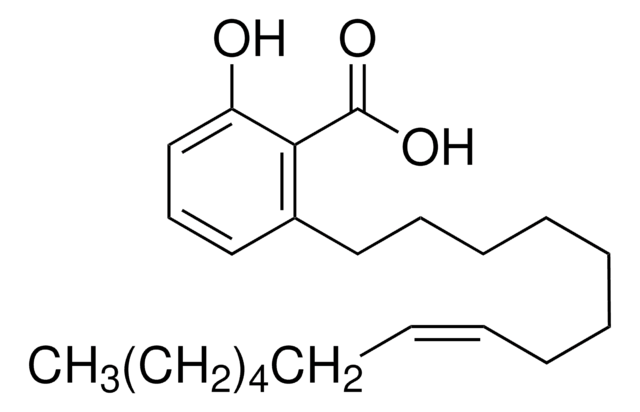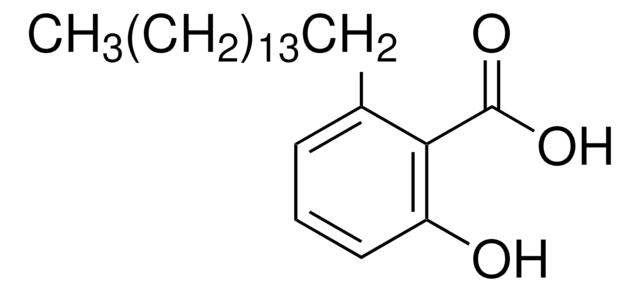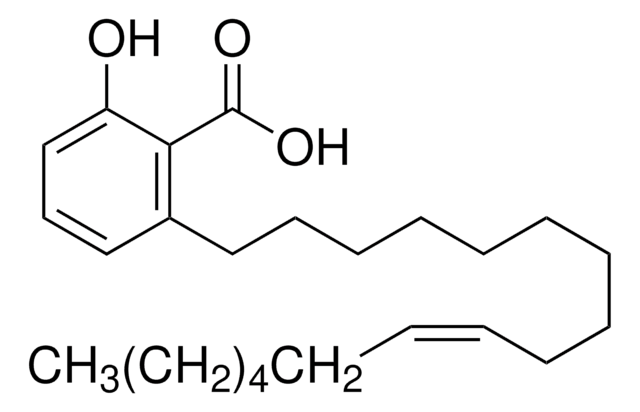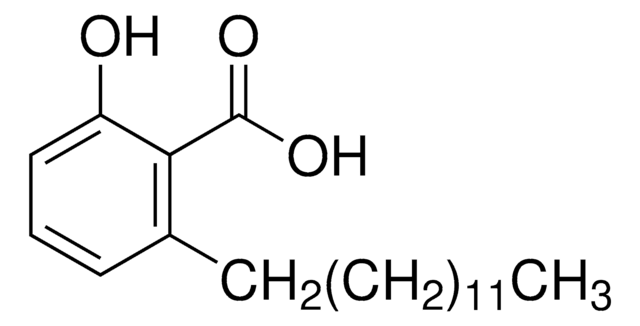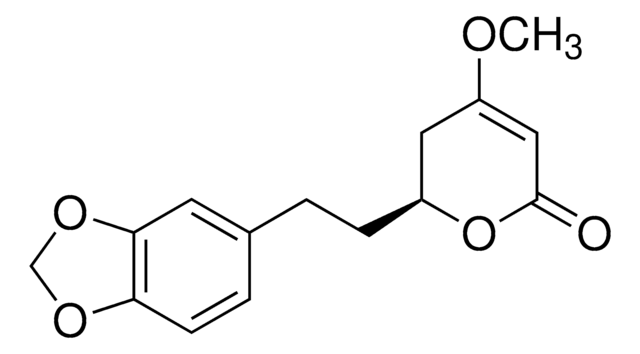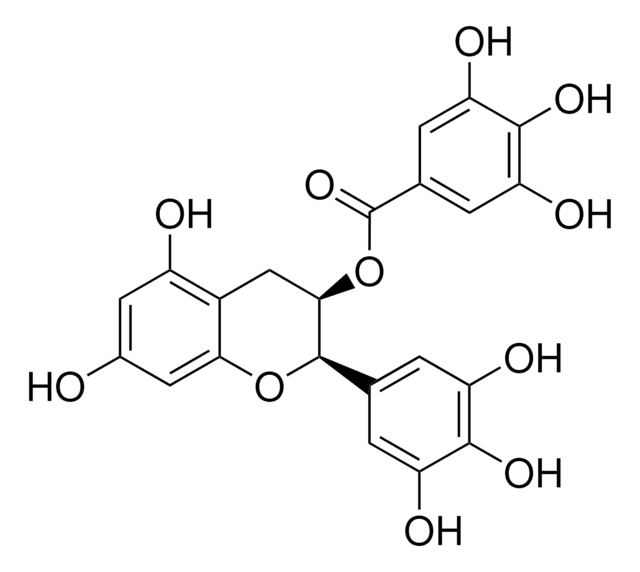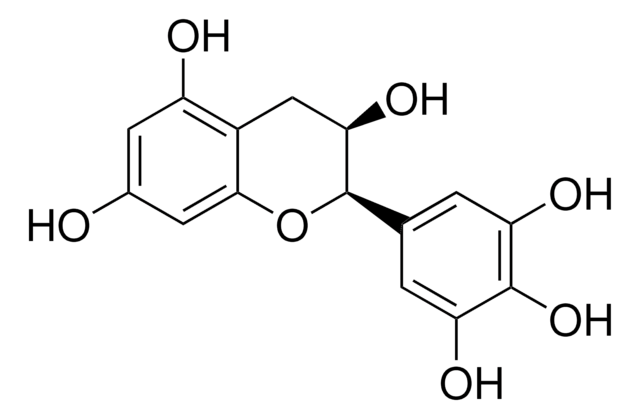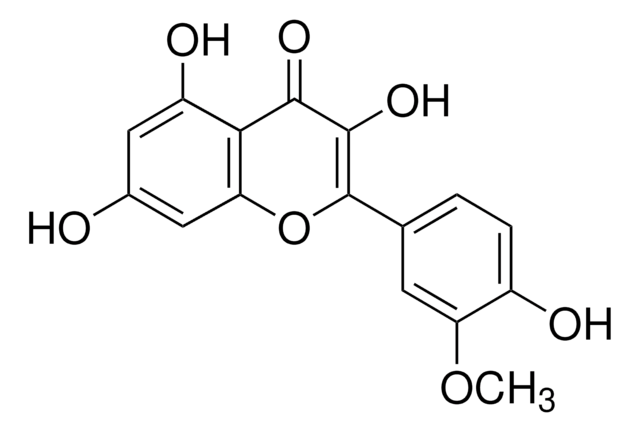02580585
Ginkgolic acid C15:1
primary reference standard
Synonym(s):
22:1-ω7-Anacardic acid, 6-[(8Z)-Pentadecenyl]-salicylic acid, Anacardic acid monoene, Ginkgolic acid I, Romanicardic acid
About This Item
Recommended Products
grade
primary reference standard
manufacturer/tradename
HWI
application(s)
food and beverages
SMILES string
CCCCCC\C=C/CCCCCCCc1cccc(O)c1C(O)=O
InChI
1S/C22H34O3/c1-2-3-4-5-6-7-8-9-10-11-12-13-14-16-19-17-15-18-20(23)21(19)22(24)25/h7-8,15,17-18,23H,2-6,9-14,16H2,1H3,(H,24,25)/b8-7-
InChI key
YXHVCZZLWZYHSA-FPLPWBNLSA-N
Looking for similar products? Visit Product Comparison Guide
Other Notes
Signal Word
Warning
Hazard Statements
Precautionary Statements
Hazard Classifications
Aquatic Chronic 4 - Skin Sens. 1
Storage Class Code
11 - Combustible Solids
WGK
WGK 3
Flash Point(F)
509.9 °F - (calculated)
Flash Point(C)
265.5 °C - (calculated)
Choose from one of the most recent versions:
Certificates of Analysis (COA)
Don't see the Right Version?
If you require a particular version, you can look up a specific certificate by the Lot or Batch number.
Already Own This Product?
Find documentation for the products that you have recently purchased in the Document Library.
Customers Also Viewed
Our team of scientists has experience in all areas of research including Life Science, Material Science, Chemical Synthesis, Chromatography, Analytical and many others.
Contact Technical Service